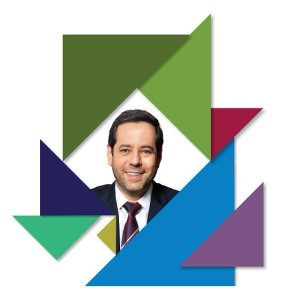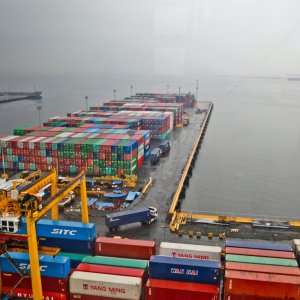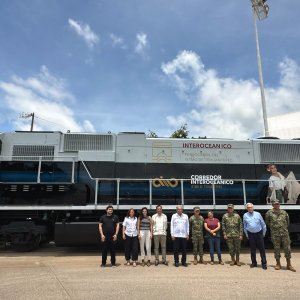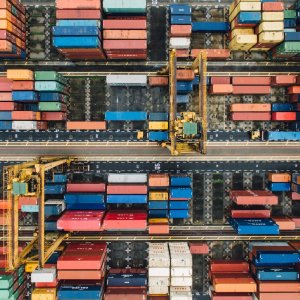
Rough Terrain: Navigating Mexico’s Logistics Segment
Mexico can be a tough place to navigate. The country is the 14th territorially most expansive in the world, according to the CIA Factbook, with a mean elevation of 1,111m above sea level. It is no surprise then that transporting goods through rugged mountains, low coastal plains, high plateaus and deserts is no easy feat, especially when the goods are as sensitive to temperature as in the healthcare industry. The distances also represent a challenge: Mexico’s 1,943,945km2 of land extend from the US in the north, to Guatemala and Belize in the south.
KEEP COOL
To overcome such logistical hurdles, distributors travel by land, sea and air employing the latest technological advances. Temperature control has become a basic-must among Mexico’s varied climates, ranging from tropical to desert, so companies are innovating to provide the smallest thermal variation possible during transportation. In addition to maintaining huge cold chain infrastructure, creating strategic alliances is a key strategy.
"We own thousands of square meters of refrigerated space throughout the world and we have agreements with suppliers such as vaQtec and Envirotainer, which enable us to maintain the cold chain throughout the entire process. The most difficult products to transport are those that require a controlled temperature because they are shipped from the factory to conservation warehouses and then to our customers or final consumers," says Rafael Figueroa, Director General of air freight market-leader, Aeroméxico Cargo.
HIGHWAY ROBBERY
Other challenges include navigating the security environment, as the vast and sometimes remote expanses traversed by fleets increase risk. There were around 1,000 assaults on cargo vehicles on highways from January to November 2016, according to the National Public Security System (SNSP). “[Insecurity] has impacted us significantly, especially during times of strikes and demonstrations. During a period of countrywide protests in January 2017 (following a hike in gas prices), our deliveries were delayed, sometimes up to a week, because there was no way to get through,” says Mireya García, Director General of Distribuidora Alpilo.
ROUGH TERRAIN: NAVIGATING MEXICO’S LOGISTICS SEGMENT
To combat this, trucks are fitted with GPS, cameras, electromagnetic locks and many have an alarm system to quickly alert local authorities who can then track down the thieves. In certain cases, transports are sent with private security at the request of the client, often for high-value cargo. In addition, in January 2017, the Mexican government eliminated gas subsidies from most Mexican states, which meant an increase in the costs of logistics providers and provoked protests throughout the country. However, companies are already working on strategies to counteract this. “2017 will be a challenge from an exchange-rate perspective,” says José Alberto Peña, Director General of Grupo Marzam. “For us, another key component is gasoline, which has a direct impact on our expenses. The exchange rate will have an impact on the industry as a whole because 90 percent of material used to produce medicines is imported. Before, perhaps businesses did not focus as much on driving efficiency in all areas but it is about the details now. For example, we have almost 500 vehicles and we have decided that whenever we change a vehicle, it should be at least diesel. We want to move to hybrid or electric in the future.”
HIT THE ROAD
Despite its challenges, Mexico still presents many opportunities for logistics and companies expect growth in the country. In June 2017, PwC forecast road freight to grow by 3.2 percent in Mexico in 2017, rail by 4.9 percent and air by 1.2 percent. Overall, the report states that road remains the most used mode of transport in Mexico, accounting for 80.8 percent of transportation.
“Five or six years ago, two-thirds of the global healthcare market was in the US and Europe. Now, those are mature markets and, although they are significant in size, emerging markets are growing at faster rates. The number one region for growth in healthcare is the Asia-Pacific Economic Cooperation (APEC) region, mostly driven by China and India and followed by Latin America,” says Ingrid Ritter, Healthcare Strategist Latin America of UPS.
Factors pushing growth in the logistics area are many, including the expansion the generics market has seen in recent years, mostly due to the government’s consolidated-purchasing schemes. “Information has also pushed growth because people are increasingly aware and have access to more information. People now know that patented and generic medicines are the same. The difference is only in the cost to patients. As Mexico is an emerging economy, people need medicines and need to be able to obtain it. This theme of accessibility has boosted growth for us,” says Víctor Soto, Director General of Levic, a Mexican logistics provider.
Additionally, NOM-059-SSA1-2015, which regulates good practices for medicine manufacturing, came into effect in February 2016, impacting national and international logistics companies. “It stipulates that to transport pharma goods within Mexico, a company must use vehicles specifically for this purpose and cannot transport anything but pharma goods. As we are already dedicated to this and have a cold chain in place, this norm has benefited us,” says Mario García, Vice President of Operations at GNK Logística. “It is excellent because it eliminates foreign companies from providing transportation between states and also benefits the security and safety of goods because they could be contaminated by other goods and supplies in the cargo. I am sure that within two years, labs will be working only with logistics operators dedicated 100 percent to pharma.”
E-COMMERCE
Pharmacies are working to improve their position in the market, grouping together in associations such as ANAFARMEX or Grupo RFP. They share a desire to modernize their operations and venture into e-commerce with logistics companies. “We are hoping for aggressive growth, because we are still small. We need to more than double our revenue from home deliveries in 2018, reaching around 150 percent growth as we are starting from a small base. We expect to see growth of around 300-400 percent in our online services,” says Guillermo Martorell, Director General of Grupo RFP, which brings together small and medium pharmacies. In 2016, Milenio reported that although independent pharmacies were the greatest in number at 22,000 across Mexico, the 7,500 branches of pharmacy chains dominate the market with 65 percent of sales.
In addition to implementing e-commerce, several logistics companies have also highlighted the trend of increasing demand for storage and just-in-time services from hospitals and pharmacies. “I see this every day. Those wanting to work in this sector understand their main markets will be Brazil and Mexico and that they will need to establish a presence in these high-consumption areas. Mexico itself is a significant consumer market so there is significant need for our customers to find the right.

















